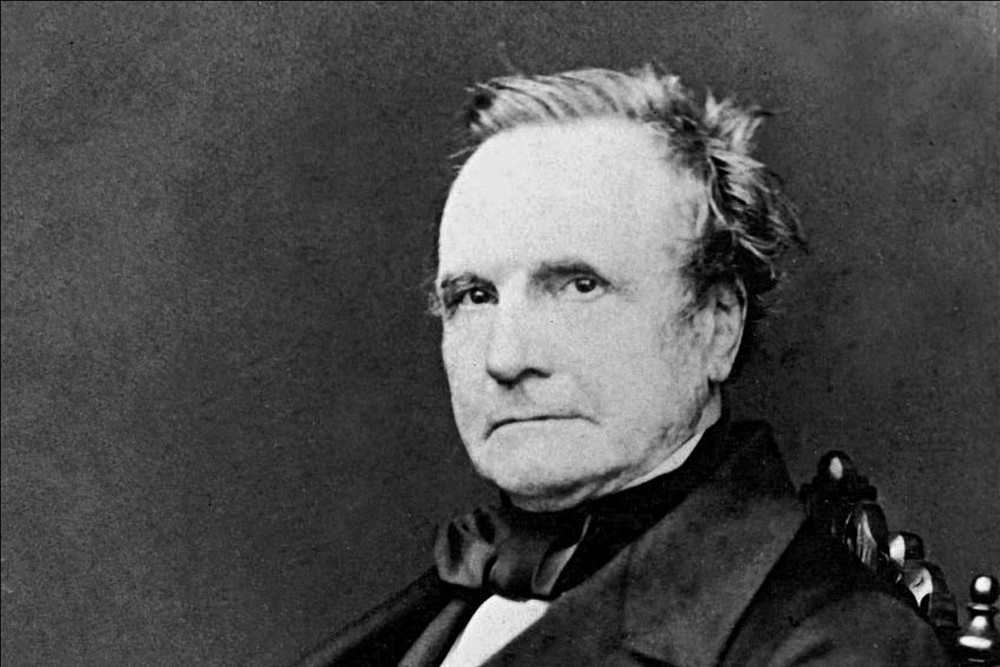AI and the future: The thinking machine

Martyn Rhys Vaughan
In this third part of our exploration of Artificial Intelligence, we will discuss how the concept of a thinking machine first arose in human consciousness.
Before the 19th century the very idea would have been meaningless. God had created the only thinking creatures and the only thinking creatures were humans and angels (devils being angels who had rebelled against God). Machines were simply things that made life easier by reducing the need for muscle power (and the owners of those muscles – the workers.) Such were grain mills and Spinning Jennies. There was no need to consider if such things could replace Homo sapiens.
This began to change in the Nineteenth century ,and one man can be said to have opened the door into the digital world (even if his work was largely forgotten by the Twentieth). That man was English polymath Charles Babbage (1791-1871). He had devised the first mechanical calculator, the Difference Engine. (It was not actually built until the Twentieth century).
But he foresaw the possibility that a machine could do much more than add, subtract, multiply, etc. He envisaged a machine called the Analytical Engine which—had it been built—would have been the world’s first digital computer.
The Jacquard loom
He was inspired to undertake the project by the existence of the Jacquard loom which could perform a number of different tasks depending on the input of different types of punched cards—a method of data entry still in existence in the Twentieth. In the end, Nineteenth century technology was not fine and detailed enough to realise his dream and the Analytical Engine was never built. However, the plans demonstrate that his machine would have fulfilled all the criteria of a digital computer, including the concept of being Turing-Complete.
Into his life came a remarkable young lady—Augusta Ada King, neé Byron (1815-1852). She was the only legitimate daughter of the poet and adventurer Lord Byron. She later became the Countess of Lovelace, and is usually referred to by this title.
She displayed an early aptitude for mathematics and philosophy and became associated with Babbage through a mutual friend. She was also very interested in the human mind and its capabilities, derived from her fear she would develop her father’s mental instability. Instead, she died young from uterine cancer.
in 1842 the Italian mathematician Luigi Menabrea wrote a paper on the Analytical Engine’s concepts and it was an English translation of this that attracted Lovelace’s attention. She quickly became fascinated by Babbage’s dream and wrote copious notes on Menabrea’s paper in 1843.
She wrote one of the first programs, an algorithm to calculate the Bernoulli numbers, and, although not the first to write one, she was the first to publish. However, she quickly realised the essential difference between the Analytical Engine and all its predecessors: that it was more than a calculating machine, that it could do different things depending on its inputs.
She wrote: “[The Analytical Engine] might act upon other things besides number, were objects found whose mutual fundamental relations could be expressed by those of the abstract science of operations, and which should be also susceptible of adaptations to the action of the operating notation and mechanism of the engine…Supposing, for instance, that the fundamental relations of pitched sounds in the science of harmony and of musical composition were susceptible of such expression and adaptations, the engine might compose elaborate and scientific pieces of music of any degree of complexity or extent.”
Potential
Lovelace was thus the first person in history to recognise that although the device worked with numbers, the numbers could have meanings beyond simple quantities: that they could be used to manipulate concepts, ideas. In so doing, she became the first person to debate the unknown potential of computer-like entities. Interestingly, this pioneer came down on the side of those who saw no threat to human supremacy.
In her notes on Menabrea, she writes: “The Analytical Engine has no pretensions whatever to originate anything. It can do whatever we know how to order it to perform. It can follow analysis; but it has no power of anticipating any analytical relations or truths.”
Thus she dismissed the possibility of analytical devices originating anything—they could derive previously unknown conclusions from facts, but could not originate.
It was this very idea which Alan Turing would directly examine in the next century.
Martyn Rhys Vaughan is a science fiction author. His latest book Culmination of Stars is published by Cambria Books and is available to buy here.
Support our Nation today
For the price of a cup of coffee a month you can help us create an independent, not-for-profit, national news service for the people of Wales, by the people of Wales.







It’s becoming clear that with all the brain and consciousness theories out there, the proof will be in the pudding. By this I mean, can any particular theory be used to create a human adult level conscious machine. My bet is on the late Gerald Edelman’s Extended Theory of Neuronal Group Selection. The lead group in robotics based on this theory is the Neurorobotics Lab at UC at Irvine. Dr. Edelman distinguished between primary consciousness, which came first in evolution, and that humans share with other conscious animals, and higher order consciousness, which came to only humans with the acquisition… Read more »